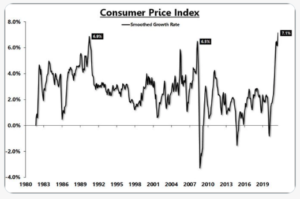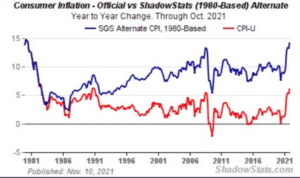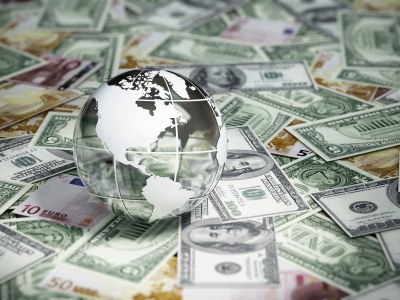Newsroom
UK, US GDP Expansion post COVID, Brexit
One striking feature of the 2021 GDP country data to date is the expansion of US and UK GDP in the post-Brexit (December 31, 2020), COVID-19 aftermath. One would have expected a contraction in overall GDP due to the global supply chain crisis, stagnant post-COVID-19 recovery, and in the case of the UK, if the Europhile macro-economists are to be believed, a catastrophic fall in UK output. Yet the reverse has been the case. With the US and the UK (the latter in particular) showing extraordinary GDP expansion versus 2020 – with the US at $20.81TRN in 2020 versus $22.97TRN to date in 2021 – a rise of 9.4%. Contrast this with the fate of the Eurozone, where GDP expansion has been negative (Germany) or much slower – also the case for the Eurozone’s main export partner, China, whose GDP has risen only by 1.1% from $14.86TRN in 2020 to $15.03TRN in 2021 to date (Data source: www.usdebtclock.org).
The UK’s notional comparative EU Member State, France, is now way behind the UK, posting GDP in 2021 to date of $2.68TRN versus the UK’s now $3.23TRN economy – an expansion of 18.3%. UK GDP expansion has been so strong that it is now closer to Germany’s $3.74TRN economy than France. In 2020 terms, the UK was at $2.64TRN versus France at $2.55TRN – so there has been a marked difference since. Germany’s 2020 GDP stood at $3.78TRN, and has actually shrunk to $3.74TRN in 2021 to date, or by 1.1%. This development gets worse the further down the EU Member State roster one goes, with the largest showing far slower GDP expansion than the UK in 2021 to date versus 2020. Italy, its third largest economy, has risen from $1.85TRN in 2020 to $1.91TRN in 2021 to date, or 3.1%, and Spain from $1.25TRN in 2020 to $1.31TRN in 2021 to date, or 4.6% (Data source: www.usdebtclock.org).
Public Debt to GDP – Eurozone
In the aftermath of the COVID-19 pandemic, much attention is rightly focused at governments’ public spending plans to boost their respective economies. President Joe Biden in the US has seen his domestic social, climate policy spending plans severely curtailed and reined in by Congress – particularly in the 50-50 Senate where Democrat Senators Joe Manchin and Kyrsten Sinema rule supreme (…), but public spending on the whole has been on the rise – mainly due to COVID-19. In terms of Public Debt to GDP – a measure often challenged by Europhile macro-economists trying to re-define a standard parameter for spurious reasons – the challenge across the dysfunctional, highly limited – in terms of monetary policy levers – Eurozone is very clear indeed. Already suffering from low to stagnant GDP expansion, the Public Debt to GDP ratios are extremely high. More importantly, France, Italy and Spain are trillion dollar GDP Member State economies, and major components of the notional EU GDP collective economy that is often cited as a major global player (Data source: www.usdebtclock.org).
Most would cite UK’s Public Debt to GDP level as elevated at 115%, but the fact that France (123%), Spain (129%), Belgium (139%), Italy (172%), Portugal (175%) and Greece (253%) hardly supports the notion of the Eurozone collective providing a more robust alternative to a sovereign nation state in terms of economic stability. For those, of course, who are prepared to agree that Public Debt to GDP is a quantifiable, verifiable measure of economic stability.
Country Public Debt to GDP
Greece 253%
Portugal 175%
Italy 172%
Belgium 139%
Spain 129%
France 123%
UK 115%
US 98%
Germany 89%
Source: www.usdebtclock.org
Eurozone Stagflation Around the Corner?
In an inflationary phase, the Eurozone – having spent a decade trying to ward of the dangers of a deflationary cycle – has Public Debt to GDP across major Member State economies at worryingly high levels – with productivity not high. With the European Central Bank and its Head, Lagarde, seemingly unconcerned about inflation – citing it as “transitory” or “temporary” – no interest rate action is countenanced for now. Indeed, many Europhile macro-economists cite this type of action as of little consequence, as it ends up acting as a de facto extra tax on taxpayers. In property-owning economies like the UK, US and China, governments must weigh up the challenge of curbing inflation and preserving salary purchasing power versus the extra cost of (mortgage-led) home ownership costs.
Inflation at 40-year Highs

Yet the extended post-Lehmans era of close-to-zero interest rates will mean that any movement upward – however minor – will have an exponential – and negative – impact – on prevailing lending terms – across the entire leveraged financial services space. Trying to keep inflation at bay amidst low to stagnant global growth, increased public spending, geo-political chaos and, above all, a global supply chain crisis as the global economy fights to combat the aftermath of a global pandemic will be challenging for central banks and central governments alike. A word of caution for the Eurozone – which the UK is far less reliant on economically than many would have you believe – UK exports to the Eurozone accounting for a mere 10% of its overall economic output as follows. Japan, which has been struggling with stagflation (high inflation, low growth) for decades, has a Public Debt to GDP ratio of 276% (Source: www.usdebtclock.org).

With inflation hitting 6.2% in the US in October 2021, 7.1% on a smoothed 6-month basis at 40-year highs, or nearly 15% on pre-1980 measures of consumer price inflation, this is no “temporary” phenomenon – the global supply chain crisis being a major cause of consumer price inflation with goods in short supply. The ECB and Europhile macro-economists spuriously claim that the Eurozone will not be affected by inflation as much as the rest of the world – these are the very same folk who told us of the catastrophic impact of Brexit on the UK economy – which has simply not transpired in real terms.

